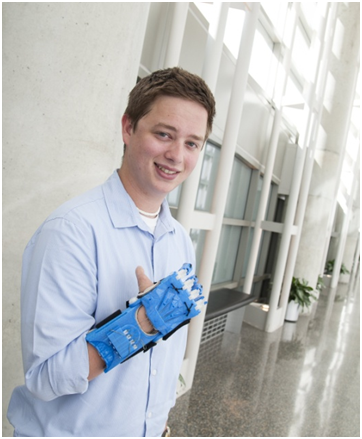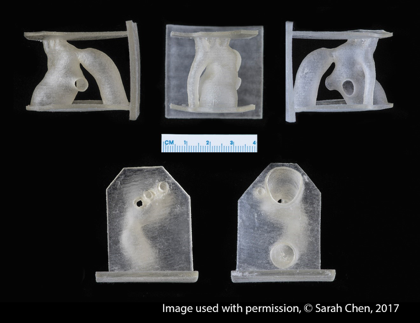Charles Goulding and Preeti Sulibhavi of R&D Tax Savers discuss the potential impact on 3D printing of a major philanthropic donation.
Bloomberg’s Donation to Promote Need-Blind Policies and Diversity at Hopkins
In a historic effort to allow Johns Hopkins to remain a need-blind institution, offer more generous financial aid packages, replace loans with grants and grow a more socioeconomically diverse campus, Michael Bloomberg has recently gifted the prestigious university $1.8 billion. This marks the largest philanthropic gift ever made to an American academic institution.
The Bloomberg Factor in 3D Printing at Johns Hopkins
Bloomberg’s gift is geared towards maintaining Hopkins’ need-blind admission in hopes that exposure to the University’s 3D printing projects will increase for a more diverse student population. More students can now be brought into the 3D printing technology field and its uses in medicine, than might have before this generous gift was made. There are no limits to where and how the Bloomberg funds could be used, just as there are no limits to the value Johns Hopkins adds to 3D printing technologies and its applications in medicine.
Johns Hopkins and 3D Printing
In addition to this, Johns Hopkins 3D prints prosthetics to provide children with affordable and durable prosthetic hands. In 2014, the Johns Hopkins School of Medicine together with e-NABLE hosted a symposium titled Prosthetists Meet Printers, which included workshops on strategy, techniques and policy regarding 3D prosthetics. This was just the beginning for Johns Hopkins, as they now have an entire facility dedicated to 3D printing and visualization.

The Johns Hopkins Biomedical Engineering department has been conducting various 3D printing technology projects since then. One such project relates to 3D printing models of human organs, more specifically the human heart. Hypoplastic left heart syndrome is a birth defect that affects normal blood flow and usually requires repairing the blood vessels exiting the heart. Where congenital diseases are concerned, no two hearts are alike, making it more difficult to make each heart model unique to each patient. In early 2017, the biomedical engineering team collaborated with the hospital’s new 3D printing facility, which has allowed them to take 3D printed models that were customized to patient needs.
Beginning as a research effort, Hopkins’ 3D print facility allows for creating clinical prints designed for surgical planning. This has been utilized by the Johns Hopkins Carnegie Center for Surgical Studies in new and innovative ways. The 3D Visualization Facility at the Carnegie Center explores novel ways to interact and interpret medical imaging data for either generic or patient-specific needs.
Johns Hopkins’ Medart program utilizes 3D printing and visualization services to work in collaboration with the Carnegie Center for Surgical Innovation. Their 3D printable models include: teaching models of anatomic, cellular and molecular structures; surgical pre-planning models; engineering prototypes; custom printed lab devices; and patient education models. Additional 3D printing services offered by Johns Hopkins’ Medart program include 3D reconstruction of DICOM data sets, 3D animation, 3D scanning, and CAD 3D modeling.

Whenever Johns Hopkins 3D printing projects can be commercialized, R&D tax credit incentives are available to support this transition.
The Research & Development Tax Credit
Enacted in 1981, the now permanent Federal Research and Development (R&D) Tax Credit allows a credit that typically ranges from 4%-7% of eligible spending for new and improved products and processes. Qualified research must meet the following four criteria:
-
Must be technological in nature
-
Must be a component of the taxpayer’s business
-
Must represent R&D in the experimental sense and generally includes all such costs related to the development or improvement of a product or process
-
Must eliminate uncertainty through a process of experimentation that considers one or more alternatives
Eligible costs include U.S. employee wages, cost of supplies consumed in the R&D process, cost of pre-production testing, U.S. contract research expenses, and certain costs associated with developing a patent.
On December 18, 2015, President Obama signed the PATH Act, making the R&D Tax Credit permanent. Beginning in 2016, the R&D credit can be used to offset Alternative Minimum tax for companies with revenue below $50MM and for the first time, startup businesses can obtain up to $250,000 per year in payroll taxes and cash rebates.
From Prototype to Production
Moving from prototype to production comes with its own set of challenges. It would benefit Johns Hopkins and its 3D Printing and Visualization Facility immensely if they encourage their commercial partners to take advantage of R&D tax incentives available to them. This would provide even more support to the 3D printing industry that has invariably altered the way medicine is practiced today.
Some have argued that Bloomberg’s gift, though generous, may not have the lasting impact intended. What better way to give the gift that keeps on giving than by exposing even more low- and middle-income students to the state-of-the-art technologies at Hopkins’ 3D Printing and Visualization Facility? In addition, many of the prototypes used in these highly customized surgical procedures, when ready to be placed into commercial production, can benefit from R&D tax credit incentives as well.












A blog post reveals much of what happens behind the scenes at 3D print service Shapeways.